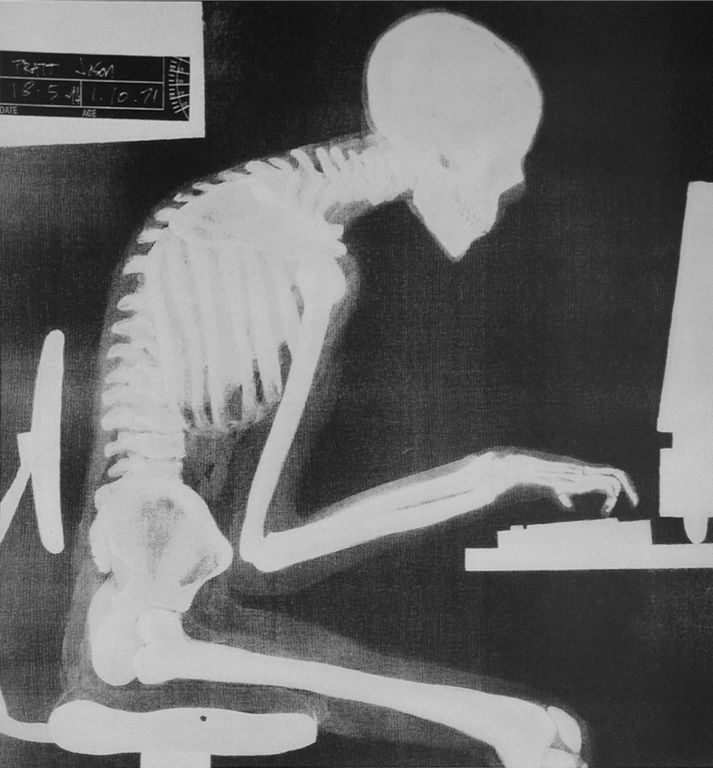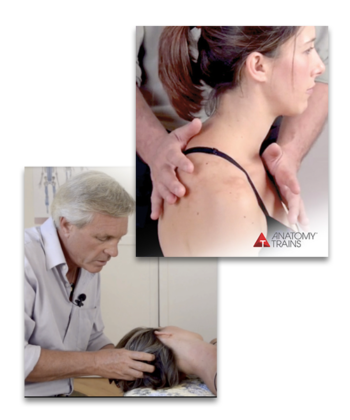In this blog post, Tom answers a frequently asked question from a follower about an all-too common postural pattern — upper and lower cervical kyphosis.
Hello, after watching the webinar (How Fascia Moves – thank you), I had a question. As an occupational therapist, I see people with hunched shoulders and necks. I question whether the fascia has been stretched due to its plasticity and thus elongated, adding to upper back kyphosis. Is there an exercise or way to aid the fascia to restore or realign to reduce the over-stretching? To allow the muscles to contract and resume a normal posture?
Peace,
Mary Elizabeth, OT
Great question – and thank you for your work. Upper thoracic and lower cervical kyphosis – hunching, slumping – is just so common across all the cultures. The trapezius, rhomboids, and upper erector group muscles all become ‘eccentrically loaded’ when this pattern happens, and consequently the surrounding and investing fascia in these muscles’ zip code also becomes overstretched (or ‘locked long’, as I call it). There are three steps to correct this pattern (with the proviso that each person has individualities – I am speaking quite generally):

1) First, open the muscles (myofascia) that are pulling them into the slump. This often includes the pectorals minor, sometimes the pectoral is major, often the belly muscles and sometimes even the hip flexors – shortness in these structure along the front of the body are the motivating power for the slump, and the first task is to free them up through manual therapy or stretching. You will also get help from the sternocleidomastoid and the anterior scalene muscle.
2) Once the front is open – you can also do this by stretching them (but do it precisely) over a roller or ball – then the second step is to free the layers in the back from each other – the trapezius, rhomboids, and erectors. Vigorous rolling can do this, manual therapy with a shearing direction can also accomplish this. The fasciae of these overstretched muscles are glued to each other, and must get unglued before they can self-correct.
3) There is no active way to shorten fascia, so step 3 is to re-shorten these back muscles to their more natural length. Horizontal rows with a forward gentle thrust of the chest can be great for the rhomboids, traps, and lats, which get involved too. Getting the very upper part of the thoracic spine to relent from its flexion into extension is tough – it’s a very strong area – has to be, it’s where the line of the spine meets the horizontal pull of the shoulders, the ‘cross’ so to speak. Back extension exercises like the yoga Cobra, with attention to the upper back / lower neck are helpful, as is the Plank with attention to lifting the sternum. Have them push their breath high into the upper lobes to help with this small but important extension.
Good luck.
-Tom Myers, Feb. 22, 2017
To check out Tom’s latest webinar – mentioned in this post- How Fascia Moves, and get FREE access by signing up for our periodic email newsletter!
SIGN UP HERE
Recommended
Opening the Breath & Easing the Neck
$89.90*All videos are online streaming videos Opening the Breath Second in our new series of regional technique video programs, ‘Opening the Breath’ takes you on a tour of the essential motions of breath in the rib cage, spine, shoulder, and neck – and how to enhance those motions for both the inhale and the exhale… Read more
Add to cart






